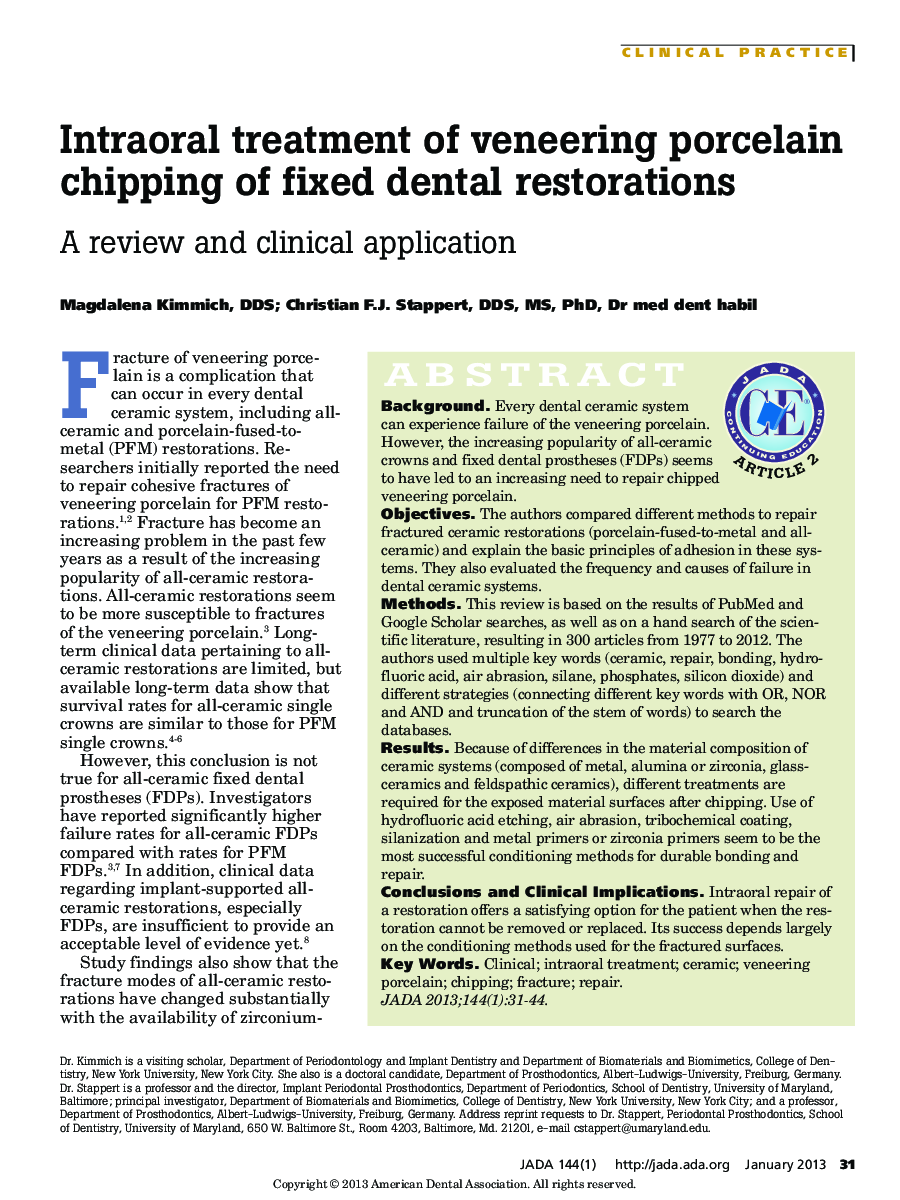| Article ID | Journal | Published Year | Pages | File Type |
|---|---|---|---|---|
| 3137401 | The Journal of the American Dental Association | 2013 | 14 Pages |
BackgroundEvery dental ceramic system can experience failure of the veneering porcelain. However, the increasing popularity of all-ceramic crowns and fixed dental prostheses (FDPs) seems to have led to an increasing need to repair chipped veneering porcelain.ObjectivesThe authors compared different methods to repair fractured ceramic restorations (porcelain-fused-to-metal and all-ceramic) and explain the basic principles of adhesion in these systems. They also evaluated the frequency and causes of failure in dental ceramic systems.MethodsThis review is based on the results of PubMed and Google Scholar searches, as well as on a hand search of the scientific literature, resulting in 300 articles from 1977 to 2012. The authors used multiple key words (ceramic, repair, bonding, hydrofluoric acid, air abrasion, silane, phosphates, silicon dioxide) and different strategies (connecting different key words with OR, NOR and AND and truncation of the stem of words) to search the databases.ResultsBecause of differences in the material composition of ceramic systems (composed of metal, alumina or zirconia, glass-ceramics and feldspathic ceramics), different treatments are required for the exposed material surfaces after chipping. Use of hydrofluoric acid etching, air abrasion, tribochemical coating, silanization and metal primers or zirconia primers seem to be the most successful conditioning methods for durable bonding and repair.Conclusions and Clinical ImplicationsIntraoral repair of a restoration offers a satisfying option for the patient when the restoration cannot be removed or replaced. Its success depends largely on the conditioning methods used for the fractured surfaces.
